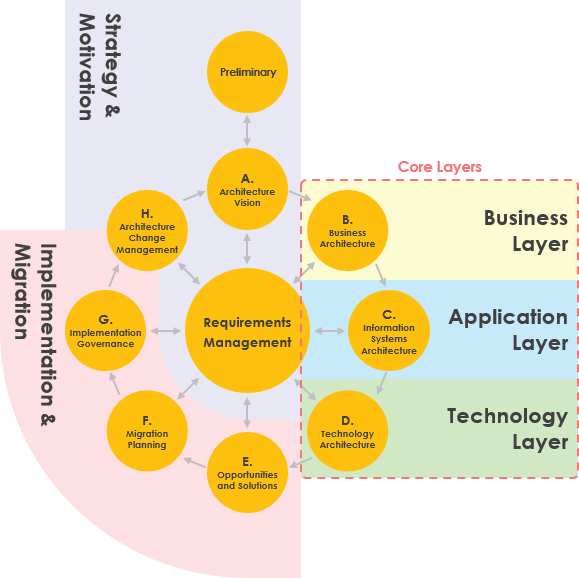Introduction
In the realm of enterprise architecture, TOGAF (The Open Group Architecture Framework) plays a pivotal role in guiding organizations through the complexities of system design and evolution. Central to TOGAF is the concept of architecture, a term defined by the ISO/IEC 42010:2007 standard as “The fundamental organization of a system, embodied in its components, their relationships to each other and the environment, and the principles governing its design and evolution.” TOGAF aligns with this definition but imparts its own nuanced perspective on the meaning of architecture.
TOGAF’s View on Architecture
In TOGAF, architecture is not a monolithic concept but one that varies based on the context in which it is applied. Primarily, architectures in TOGAF serve as formal descriptions or detailed plans of systems at the component level, providing a roadmap for effective implementation. This perspective encompasses the structure of components, their interrelationships, and the underlying principles and guidelines governing their design and evolution over time.
Key Components of Architecture in TOGAF
To delve deeper into the understanding of architecture in TOGAF, it is essential to recognize the four commonly accepted domains within an enterprise architecture:
- Business Architecture:
- Focuses on the business strategy, goals, and operations.
- Defines the structure and functioning of an organization from a business perspective.
- Aims to align business processes and objectives with the overall enterprise strategy.
- Data Architecture:
- Deals with the organization’s data assets and how they are stored, processed, and utilized.
- Encompasses data models, data flow diagrams, and data governance principles.
- Ensures data consistency, integrity, and accessibility across the organization.
- Applications Architecture:
- Concentrates on the design and interaction of software applications.
- Defines the blueprint for application deployment and integration.
- Ensures that applications align with business objectives and operate cohesively.
- Technology Architecture:
- Addresses the hardware, software, and network infrastructure needed to support applications and data.
- Focuses on technology standards, platforms, and interoperability.
- Guides the selection and deployment of technology components to meet organizational needs.

Conclusion
In conclusion, architecture in TOGAF embodies a multifaceted concept that extends beyond a mere technical blueprint. It encapsulates formal descriptions and plans at the component level, offering guidance for effective implementation. The four domains of business, data, applications, and technology architecture collectively contribute to the holistic understanding of an enterprise’s structure, relationships, and principles. By adhering to these architectural principles, organizations can navigate the complexities of system design and evolution, ensuring alignment with business goals and fostering adaptability in an ever-evolving technological landscape.